Microfabrication technologies for new biomimetic in vitro systems
Mme Elena Martinez
Institute for Bioengineering of Catalonia (IBEC)
In vitro assays are recently shifting from the use of 2D cell monolayers to the use of organotypic, 3D cell cultures, as it is becoming increasingly evident that the “flat biology” approach is not predictive of in vivo tissue responses. Our research aims to further accelerate this trend by providing new cell culture platforms that account for the structural, physiological and biochemical features of the in vivo cellular microenvironment. Specifically, we develop systems that mimic the 3D morphology, the spatio-chemical gradients and the dynamic microenvironment of the living tissue. For this purpose, we use a combination of micro and nanofabrication technologies and tissue engineering components. These biomimetic systems will provide the interface between biomedical questions and engineering tools to (i) develop new insights into environmental regulation of cells, (ii) model and investigate diseases, and (iii) develop new therapies for regenerative medicine.
Durée :
The Physics of Living Matter - European Summer School
Du au
Amphi WEISS, Strasbourg
Laboratory of Cell Physics
The European Summer School of the University of Strasbourg is a prestigious one-week meeting of students from all over Europe. They present their research projects and attend lectures on some of the most recent topics in physics presented by internationally known scientists. The 2016 edition of the school is organized by the faculty of physics and engineering of the University of Strasbourg together with the Collaborative Research Centre 1027 of the University of the Saarland.
Cell Physics has emerged as a new branch of Physics during the last decade. Quantitative experiments that address the cellular dynamics can nowadays be performed directly in the living cell, tissue or organism. This enables the investigation of biological systems using a typical physicist’s approach, including a tight interaction between models and experiments. Because living matter exhibits new, complex out-of-equilibrium properties, cell physics has received a lot of interest from theorists in terms of model building.
New aspects have been developed in biology, concerning topics such as collective effects, chirality, quantum biology, as well as the origin of life. We now witness the appearance of a new generation of scientists that are trained in Physics as well as in Biology, who know about theory as much as about experimental work. The recently created Cell Physics Master in Strasbourg University is based on this scientific direction. The scope of the school covers recent developments in cell physics with a central emphasis on their biological relevance.
Thème(s) : Physique Sciences
Sciences fondamentales
Producteur : Université de Strasbourg
Réalisateur : Université de Strasbourg
Origin of life
Early traces of life in the fossil record
M. Karim Benzerara
Université Pierre et Marie Curie, Paris
The question of the origins of life has been one of the great questions of all time, at least since the Greek philosophers. Yet it has become a scientific field only relatively recently. Nowadays, it is a truly multidisciplinary field associating physicists, biologists, chemists, geologists and philosophers. While prebiotic chemistry, based on experimental and theoretical studies aims at pinpointing the chemical reactions that allow the very first transitions from inert matter to true living organisms, geologists work on another “stage” of the origins, relying on the study of ancient rocks to track down the oldest occurrences of life on Earth or elsewhere. This is a difficult quest with many pitfalls to discriminate between abiogenic and biogenic traces. It goes through frequent flashbacks and flashforwards to decipher how biological organisms leave directly or indirectly traces in the fossil record, under what forms, and how these can be detected by increasingly sophisticated analytical tools. Here, I will review some of the supposed oldest traces of life in rocks and discuss the bases of these interpretations. I will also mention some of the ongoing approaches developed in the field to better interpret these oldest traces of life in the geological record.
MORPHOGENESIS
Microfabrication technologies for new biomimetic in vitro systems
Mme Elena Martinez
Institute for Bioengineering of Catalonia (IBEC)
In vitro assays are recently shifting from the use of 2D cell monolayers to the use of organotypic, 3D cell cultures, as it is becoming increasingly evident that the “flat biology” approach is not predictive of in vivo tissue responses. Our research aims to further accelerate this trend by providing new cell culture platforms that account for the structural, physiological and biochemical features of the in vivo cellular microenvironment. Specifically, we develop systems that mimic the 3D morphology, the spatio-chemical gradients and the dynamic microenvironment of the living tissue. For this purpose, we use a combination of micro and nanofabrication technologies and tissue engineering components. These biomimetic systems will provide the interface between biomedical questions and engineering tools to (i) develop new insights into environmental regulation of cells, (ii) model and investigate diseases, and (iii) develop new therapies for regenerative medicine.

